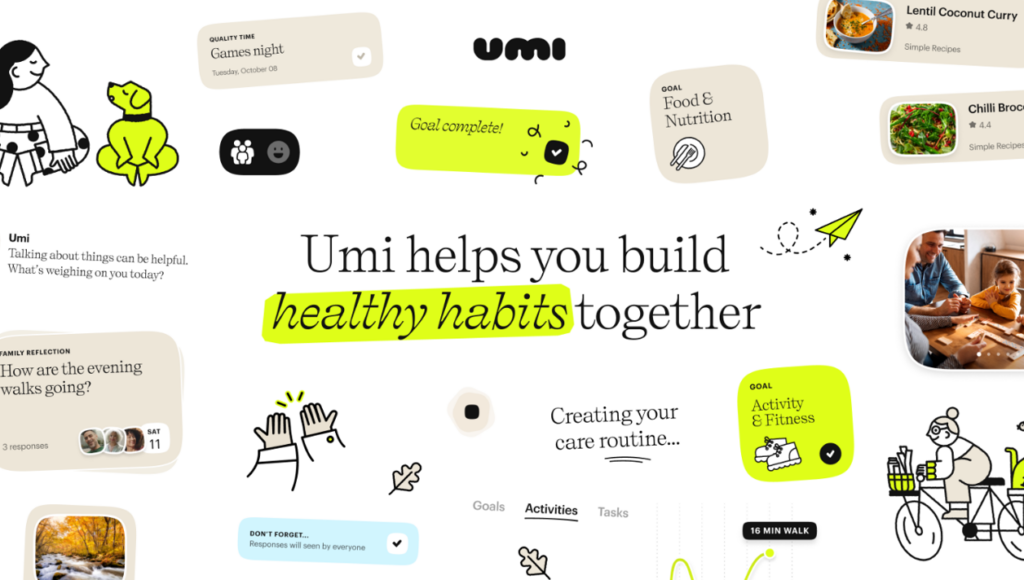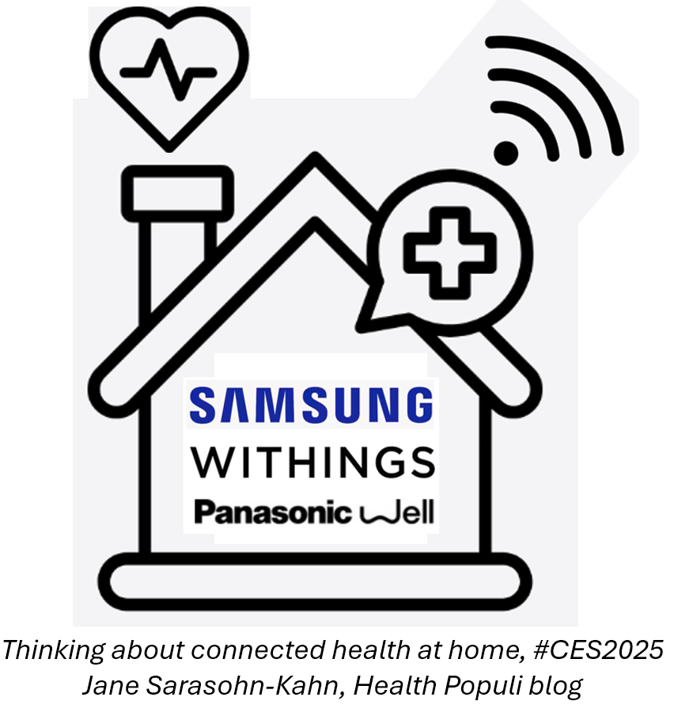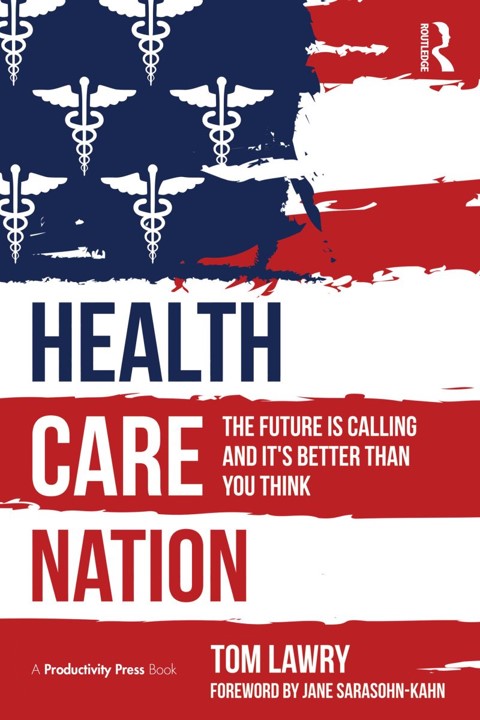There were over 4,500 exhibitors on the show floor of the 2025 CES in Las Vegas last week, addressing every imaginable aspect of consumers’ daily lives as we increasingly coexist with technology to support life, liberty, and our personal pursuits of happiness…..
….and health.
My focus is always on health, and in the past decade and a half, health/care, everywhere. So my lens on #CES2025 looked out for specific point solutions for health, medical care, fitness and well-being, along with adjacencies for mobility/auto, environmental health (think: clean air, clean water), kitchen appliances and food-tech, and home care (not the medical aspect but the Martha Stewart home-making variety).
My unified field theory, a sort of health/care Holy Grail, is the increasingly possible reality of our homes as our personal and family health-hubs: where we can inspire, make, and sustain our health and the health of/for our loved ones and friends. This vision is now in our reach. In this post, I’ll share three organizations’ visions for health/care at home, streamlined, convenient, and do-able: via Samsung, Withings, and Panasonic. Each of these companies exhibited and discussed their corporate visions for connected health at home.
Samsung
In the company’s CES 2025 opening press conference, Samsung’s Vice Chairman and CEO Jong-Hee (JH) Han presented a talk on “AI for All: Everyday, Everywhere.” He expounded on Samsung’s Home AI, integrating home appliances and devices to simplify life. You can experience the entire press conference here,
“Everyday, Everywhere” includes health, which at CES 2025 was further discussed by Hon Pak, SVP and Head of the Digital Health Team for Samsung Electronics. A physician, Pak spoke about Samsung Health’s growing Home AI ecosystem for supporting consumers in their health goals. He discussed examples of managing diabetes and metabolic health (through Samsung’s collaboration with Dexcom) as well as sleep health, where data gathered through wearable devices such as Samsung’s Galaxy smartwatch and Galaxy ring can combine with home-generated information (think: light, temperature) to support better sleep,
At the AARP AgeTech exhibit space, Samsung Health demonstrated the evolving CareHub platform with a marketplace of devices and services joining the company’s growing health/care ecosystem, further integrating with the company’s SmartThings and smart home and appliance innovations.

In our panel at CES 2025 brainstorming “Health at Home: Where Health Meets Smart Living,” Dr. Ricky Choi who leads Samsung Health further detailed the company’s experience in connecting health. I have been tracking the growing IoT for health since we began to see the growing Internet of Things for health, a vision which Samsung has shared over several years at CES (which I discussed here on Health Populi).
One of the realities that has evolved is the now-available connectivity of the Samsung smart refrigerator in partnership with Instacart, the grocery delivery platform. On our panel, I called out this relationship, with a scenario of a consumer managing a chronic condition for which her app is informed. The working mom can “see” into her refrigerator contents when away from home, and the fridge can generate a recipe using ingredients in the appliance that meet the dietary constraints of the consumer. She can then connect a list of the missing ingredients to her Instacart account, and those foodstuffs can be delivered to her home or she can pick up the groceries at her preferred food market.
For more on Samsung’s vision for the connected home for health, here’s Samsung’s CES 2025 press release, “From Sleep to Nutrition Management: Samsung Showcases End-to-End Wellness Solutions.”
Withings
Following my return from Vegas to the home base, I’ve been absorbing reviews of CES from a broad range of analysts and tech journalists. I am delighted to see coverage of the Withings OMNIA smart mirror in one of my go-to design newsletters/magazines, Wallpaper. I think Wallpaper’s including Withings at the top of their CES observations was well-considered: Wallpaper’s focus is on design, and my long-time view on Withings since initially meeting the company at CES in has been that it is one of the most design-ful health-tech companies I know (and use myself). [Here’s what I wrote about Withings ten years ago from #CES2015 — when magician Penn Jillette was a spokesperson who used a connected Withings scale in his own weight-loss journey].
Ten years since I wrote that, fast-forward to CES 2025, the Withings exhibition booth was teeming with CES attendees during my visit. Over the ten years since that post, Withings has innovated over a dozen connected health devices
I was fortunate to have the company’s Director of Product Management and Devices give me an in-depth look into the companies’ latest announcements and innovations. Antoine Joussain and I brainstormed the future of health/care at home through various Withings’ offerings which in 2025 fall into 3 categories: devices, data, and services.

These products include smartwatches with health sensors (including ECG and heart function, sleep tracking, and menstrual health), smart scales (measuring muscle mass, heart metrics, and metabolic health), blood pressure, temperature, oxygen, sleep tracking, and a home urine lab — the U-Scan Nutrio, the first toilet plug-in urine scanner.
Withings has evolving the app which can provide a quote “360 degree” view of a user’s health, given these many health metrics that the company’s devices can gauge.
In providing a view on The Future of Health, Withings’ focus at the exhibit booth was for the OMNIA smart mirror which is a conceptual vision — not yet a marketed product — which was designed to illustrate that 360-degree view of a person using the various connected devices. The vision is to, ultimately, take these data points, analyze them and provide actionable advice which could also link to a telehealth visit with a health care professional appropriate to the diagnosis or potential issue raised by the full data view.
Given the range of signals covered by the devices, the insights could uncover issues into heart health, sleep health, nutrition, and fitness….which would further evolve with new sensors and devices added into the Withings health data ecosystem.
Panasonic
The CEO of Panasonic, Yuki Kusumi, gave an opening keynote at CES 2025 in which he and the CEO of Panasonic Well, Yoky Matsuoka, discussed the organization’s plans for connected health at home.
Panasonic Well is built on four mission-pillars –
- Care for the collection
- Amplifying human interactions
- Increasing joy and connection, and,
- Enabling positive behavior change.
There is an important “noun” used in the explanation of Panasonic Well: it is “family” (with an emphasis on “caregiving”). As the press release calls out,
“When we say families, we mean all the people we cherish and connect with closely—whether it’s our nuclear families, neighborhood families, or anything in between,” said Yoky Matsuoka, CEO of Panasonic Well. “The push and pull to make room for wellness in daily life is extra challenging, especially for those who are raising a family and caring for aging or sick loved ones, wellness often comes last. At Panasonic Well, we are leveraging AI, immersive research, years in the field with real families, and partnerships with leading wellness brands and trusted institutions to create solutions families need and want. Across the world, families are all facing their own unique set of challenges and struggles, and we are here to support them on their wellness journey.”

In this vision of connected health at home, behavior change is a key goal, and Umi is the family health coach.
The coaching platform is built utilizing Anthropic’s AI model, Claude, mashing up consumers’ data, analyzing the information, and serving up actionable plans for family members. “Healthy habits” focus on movement, nutrition, family and personal time. The Panasonic Well Partner Collective in this healthy-action ecosystem include Additon Wealth, Aaptiv, BlueApron, Calm, the National Sleep Foundation, Precision Nutrition, SleepScore Labs, YourCoach Health, and Thumbtack (here, consider the family/personal time connection — remembering that many people say they can’t find time to exercise or go to the gym due to time constraints).
Health Populi’s Hot Points: Each of these three examples of connected health at home has a unique vision for bolstering households’ health and well-being. These models are snapshots-in-time (circa 2025) which will evolve ongoing with the addition of new data points gathered through innovative devices and technology platforms on the supply side; and on the demand side, the interests of consumers and caregivers, medical providers and payors seeking to migrate primary and secondary care to the homes and into the hands of health citizens (as employees, plan members, and individuals seeking out DIY self-care on their own terms).
One of the limiting factors or barriers to achieving continuity of care from hospital-to-home in a streamlined, omnichannel way has been the lack of interoperability of health data and devices. For continuity-of-care to deliver on patient outcomes, information must be “liquid” and flow where it needs to go (that is, to the clinicians, coaches, experts, and caregivers on the patient’s or client’s care team) and into information systems that help make sense of the data to act on in real-time.
With this barrier top-of-mind, it was welcome news communicated during CES 2025 that Drew Schiller, President of Validic, announced the ability for consumers’ health tracking data from wearable tech to join with their clinical data in electronic health records (EHRs). This will address, to begin, over 350 consumer-facing devices — wearables, smart watches, fitness trackers, and so on.
“Movement is health,” I noted under Drew’s LinkedIn announcement: there is a growing evidence-base proving that physical activity has direct positive impacts on peoples’ chronic diseases and other conditions — including mental health and well-being.
The announcement’s press release noted that,
“Increased physical activity is tied to meaningful health improvement for people living with most health conditions, including:
- Improved Glycemic Control in Diabetes
- Reduced Blood Pressure in Hypertension
- Enhanced Brain Function and Longevity,”
with Drew adding that,
“Connecting physical activity data directly into EHR workflows gives clinicians a more complete picture of a patient’s health, enhancing patient conversations and behavior change recommendations.”

I left Las Vegas and #CES2025 with the hopeful sense that self-care is primary care, and that the homes and the people who live in them are getting increasingly prepared and enabled for life- and work-flows to bolster our health, medical care, and well-being.
Signing off from this look at a unified field-theory for connected health at home — JSK, Leaving Las Vegas (cue: Sheryl Crow), but I’m not “leaving for good” as Sheryl’s lyric goes. I know I’ll be back next January for #CES2026.





 I am so grateful to Tom Lawry for asking me to pen the foreword for his book, Health Care Nation,
I am so grateful to Tom Lawry for asking me to pen the foreword for his book, Health Care Nation,  I love sharing perspectives on what's shaping the future of health care, and appreciate the opportunity to be collaborating once again with Duke Corporate Education and a global client on 6th May. We'll be addressing some key pillars to consider in scenario planning such as growing consumerism in health care, technology (from AI to telehealth), climate change, and trust -- the key enabler for health engagement or dis-engagement and mis-information. I'm grateful to be affiliated with the corporate education provider
I love sharing perspectives on what's shaping the future of health care, and appreciate the opportunity to be collaborating once again with Duke Corporate Education and a global client on 6th May. We'll be addressing some key pillars to consider in scenario planning such as growing consumerism in health care, technology (from AI to telehealth), climate change, and trust -- the key enabler for health engagement or dis-engagement and mis-information. I'm grateful to be affiliated with the corporate education provider  Thank you FeedSpot for
Thank you FeedSpot for